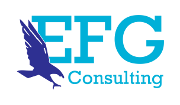HE Saeed Mohammed Al Tayer, Managing Director and Ceo of DEWA, reveals how the next 50 years in the U.A.E. will see unparalleled investment in digitalization and sustainability
What is your definition of a smart city?
A smart city is a city where services are integrated seamlessly into daily life and resources are optimized for maximum efficiency, making people happy. In October 2013, HH Sheikh Mohammed bin Rashid Al Maktoum, Vice President and Prime Minister of the U.A.E. and Ruler of Dubai, announced a project to transform Dubai into a smart city. The Smart Dubai initiative structures its end-goals across three strategic pillars: efficient, seamless, safe and personalized.
DEWA has lauched three smart initiatives in line with the Smart Dubai initiative, which aims to make Dubai the smartest and happiest city in the world. one of these initiatives is Shams Dubai to install photovoltaic panels on rooftops. DEWA has one of the smartest electricity and water grids in the world, connected by smart meters providing regular data connected to DEWA’s smart application to make life easier for its customers. DEWA has built the firt smart station in the region in partnership with KEPCO to link smart buildings to exchange information, improve energy and water efficiency, and optimise renewable energy in smart cities. A smart city is not a final destination but rather a journey that has an ultimate goal, which is to make people happy.
What will be the next major transformations to be implemented in the U.A.E. ?
The Dubai Clean Energy Strategy 2050 aims to provide 75% of Dubai’s power capacity from clean energy by 2050. We have an integrated vision to ensure energy security and sustainability that includes three main pillars. The first is to produce more clean energy, especially solar energy. Our main projects include the Mohammed bin Rashid Al Maktoum Solar Park, the largest single-site solar park in the world, based on the Independent Power Producer Model, with a production capacity of 5,000 megawatts by 2030. The second is to decouple the desalination process from the production of electricity, and desalinate water using solar energy. DEWA aims to produce 100% desalinated water by 2030 using a combination of clean energy sources and waste heat. The third is disrupting the role of utilities by digitisation using the Fourth Industrial Revolution’s disruptive technologies, such as Artificial Intelligence, UAVs, energy storage, blockchain, the Internet of Things, and many more.
What makes you optimistic about the next 50 years for the U.A.E.’s economy?
The market is generally going towards two main areas: clean energy and digital transformation. The U.A.E. has taken early steps to bid farewell to the last barrel of oil and achieve a balance between economic development and maintaining a clean, healthy, and safe environment. Today, through its strategies and investments, the U.A.E is leading global efforts in renewable and clean energy sectors. The U.A.e. Energy Strategy 2050 aims to achieve an energy mix that combines renewable and clean energy sources to balance economic requirements and environmental goals. The U.A.E. will invest $163.3 billion until 2050 to meet the growing energy demand and ensure the sustainable growth of the economy. We are making every effort to shape the government of the future. We are keeping pace with the latest developments in stategic sectors based on sound scientific foundations and identifying and plnning for future challenges to turn them into promising opportunities. This will achieve the U.A.E. Future Foresight Strategy, and the U.A.E Centennial 2071 to make the U.A.E. the world’s leading nation by 2071.
Source: Forbes Middle East

